

The purpose of this page is to provide information for research on the NYCS from the pages of the NYCSHS Central Headlight magazine and other sources of information to help historians and modelers have access to historically correct data.
This page will be updated periodically with additional materials.
This document presents an overview of the corporations that became the New York Central Railroad as it existed on January 31, 1968. It shows dates of control, leasing and merger with comments on stages of operations integration. It was prepared by Malcolm Laughlin.


The May through August 1940 issues of Railroad Magazine contained installments of the New York Central System locomotive roster, listing all locomotives alphabetically by class. (Early diesel locomotives, called “oil electric” in the roster, were classed DE or DEs.) The roster was checked by Paul Kiefer, the NYC’s Chief Engineer of Motive Power. He was unable to check the third installment before publication, but corrections to it are listed at the end of the fourth installment and have been applied to the digital version presented here. This roster was published before construction of the L3 and L4 Mohawks (4-8-2), the S1 and S2 Niagaras (4-8-4) and the Pittsburgh & Lake Erie U3L 0-8-0 switchers and A2 Berkshires (2-8-4). In the interest of completeness, these classes are presented below as they would have appeared in such a roster.
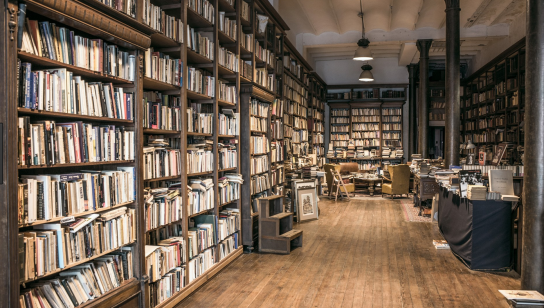

You will find the information here about most NYCS cabooses
In Central Headlight 3rd Qtr. 1988

In 1945, the Equipment Engineering Department of the New York Central Railroad developed and Alco executed a locomotive design which had a marked impact on the steam locomotives to follow, and on the traditional measurements by which motive power would be evaluated. This locomotive was so significant that its performance is still discussed by the men who design and run locomotives. The locomotive was the New York
Central class S1 4-8-4 Niagara.
In Central Headlight 1st Qtr. 1989

There are more variables in the measurement of steam locomotive horsepower than in diesel or electric horsepower. In the steam era, the railroads who supported the most comprehensive test programs to measure steam locomotive performance, including horsepower, were the Pennsylvania Railroad and the New York Central.
In Central Headlight 3rd Qtr. 1975

For best reading click below to open the article file and then download it to your computer for better quality viewing. It can be viewed in your browser, but the quality will not be as good.
There were a few errors in the article when it was published almost 40 years ago. There is a short errata sheet at the end of the article with corrections.
Dick Dawson gave his blessing for us to put this up on the site and noted that he had significant help from Harold Crouch, Charlie Smith and Lans Vail. It is a wonderful article and we appreciate Dick’s willingness to allow us to post it here.

In Central Headlight 2nd Qtr. 1980

Few people realize that the NYC had an all-steel heavyweight coach of a standard design all its own. It, too, was mass-produced, and, by any number of yardsticks, it was a success. For lack of a better name, these coaches were simply referred to as 70-foot steel coaches.

John just finished creating a new version of the painting and lettering history of the 379 (out of 474 proffered) heavyweight sleepers accepted by the NYCS in the 31 December 1948 Pullman divestiture. He has been interested in these cars ever since he wrote an article about them in the NYCSHS Central Headlight more than four decades ago.
From the NYCSHS Central Headlight, 4th Qtr 1978, 1st Qtr 1979, & 3rd Qtr 1979


From the NYCSHS Central Headlight, 2nd Qtr 1979



Photo NYCSH Collection PB027101
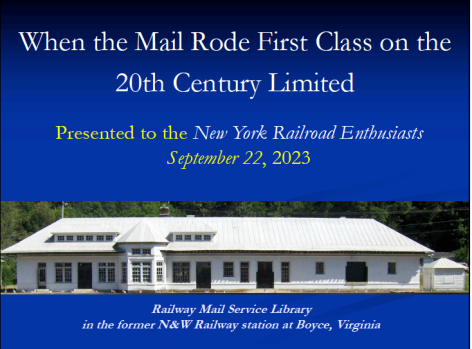
And N-Scale Passenger Car Models



From the NYCSHS Central Headlight, 2nd Qtr 1974 & 1st Qtr 1976
 The New York Central Oval, reportedly suggested by an employee in about 1904, underwent. a series of minor changes during its use until the major design in 1958 when the colored one was designed for use on the “New” jade green cars. This article covers the period up to this change. The original herald had Roman capital letters
The New York Central Oval, reportedly suggested by an employee in about 1904, underwent. a series of minor changes during its use until the major design in 1958 when the colored one was designed for use on the “New” jade green cars. This article covers the period up to this change. The original herald had Roman capital letters The “Oval” on NYC J-3 Hudsons below the headlight was “deep blue”, and ‘black” in later years. The oval on Dreyfuss Hudsons was “deep blue”. The ONLY Hudsons with red ovals were the two Empire State Express engines, J-3 5426 and 5429.
All first generation diesels, E’s, F’s, Alco and F-M cabs, etc had red painted ovals. I believe that the NYC GREY passenger F-3’s had cast red oval plates on the nose. (We have one of these at the lockers.)
On most NYC ovals, the lettering was white and the “background color” within the oval was the same color as the surface it was stenciled on. For example, on cabooses, the background color was the color of the caboose.
I am aware that some Pacemaker box cars had an oval with a black background……
There is no drawing, or if we have one we have not scanned it, for the oval for the Mercury Pacifics, 4915 and 4917. I am aware that former prez Lans Vail worked with Mort Mann of Sunset models and provided the tech info for the O scale Mercury Pacific and the cars. We have elevation drawings for the Mercury cars, and there is no red color used. Colors used include gray lacquer, aluminum lacquer, aluminum scratch brush lacquer, Paladium leaf edge black line, black paint, and gray roof paint.
I have seen an image of a Mercury streamlined Pacific in one of the NYC color books, perhaps one of Dave Sweetland’s?
As info, the passenger car drawings are grouped by type of car, i.e. head end cars, coaches, Pullmans, Observation cars, etc. This was done to be most beneficial to a modeler and also to avoid doing custom sorts, and to offer each file as complete as possible at a nominal cost. This has been the arrangement since the program’s inception.
We no longer have, or we have and have not digitized drawing SK-V-4539.
Hope this is helpful.
Tom Gerbracht
NYCSHS Director
Found a reference to the color used on the cast oval plates used on the Pacemaker rebuilt passenger cars. This was in a tack board correction made by Lanse Vail back in the early 90s and his research shows the background color to be “Aurora Red,” DuPont 88-363-R. It was called out in a drawing, SK-V-4539.
Dave Staplin
NYCSHS Modelers Committee
 NYC Rail
NYC Rail By Dave Staplin


From the NYCSHS Central Headlight 2nd Qtr. 1982
By Carl F. Kantola



From the NYCSHS Central Headlight, 3rd Qtr 1981
By Carl F. Kantola

The NYC constructed several streamlined steam locomotives beginning in 1934. The country was coming out of the great depression and railroads felt that they needed something to inspire interest in railroads. The streamline locomotive and passenger cars seemed the answer.

From the NYCSHS Central Headlight Qtr 4 2016

Still gloriously attired after the trying years of World War II, J-3a 5426 lays down a magnificent trail of winter exhaust as she leads Train 50, the eastbound Empire State Express at Hudson, New York on March 3, 1947.
Collection of Harold K. Vollrath/ NYCSHS Collection

On May 3, 1957 the New York Central announced the complete dieselization of all train operations in the system. From that point on only diesels ran on the NYCS. The two articles that were run in the NYCSHS Central Headlight in the May 1975 and November 1975 editions provide an excellent overview of all of the NYCS diesels. They are presented here for your research and enjoyment.


You will find two articles on the NYC EMD E-Units in this section. The NYC ordered the first four of these in 1945. The NYC eventually acquired a total of 28 F-7 A units, 22 F7 B units, and 60 F-8 A units. These two articles were published in the Central Headlight 2nd Qtr. and 3rd Qtr. 2007.

Article copy donated to the NYCSHS by John Teichmoeller, editor B&O Modeler,
Baltimore and Ohio Historical Society. March 2019.
This article is provided with the disclaimer that the NYCSHS did not participate as a reference for the article and does not guarantee that all of the information is correct.



You will find several NYCSHS Central Headlight articles on steam locomotives added here and more to be added in the future.

From the NYCSHS Central Headlight
1st Qtr 1984

Among the most interesting steam locomotives operated by the New York Central System were the H7 Class Mikados. While all of these locomotives were built to a standard design, many of them acquired different tenders and a variety of appliances as they went through their careers. The purpose of this article is to provide an overview of the H7 fleet and to document the modifications made on specific locomotives.


The H10 class locomotive was the first result of the efforts of William E. Woodard, Vice President and Chief Engineer of the Lima Locomotive Works, to develop a more powerful and more efficient steam locomotive than
those in service during the early 1920’s. Lima’s management approached the President of the New York Central, Alfred H. Smith, to agree to test and later, if successful, purchase a locomotive incorporating Woodard’s ideas and designs.
As a result, Lima constructed, at its own expense, one locomotive, Michigan Central 8000, in May, 1922, on order L-1027. The basic design evolved from the ten Michigan Central class H7e 2-8-2’s, built in 1920 along with 50
similar locomotives for the Big Four, that were considered to be very powerful and efficient locomotives.


In the first decade of this century some of the most notable advances in American locomotive design and construction was taking place. Almost every major railroad in the
United States was in the process of ordering engines for a specific service over assigned divisions. Naturally, the New York Central was no exception. History proves the motive
power on the New York Central always kept pace with, and often was the leader, in the industry.
Buried in the 1920 locomotive roster of over 6,000 engines were 200 that made up the K-11 class that truly deserve a belated “Well done!” The reason why these engines were
built may never be confirmed but if we take the liberty of assuming we might have a logical answer.

 Pages from B&AAClassesHeader" width="640" height="171" />
Pages from B&AAClassesHeader" width="640" height="171" />
The A1 Berkshire type on the Boston and Albany was a paradox. On the one hand it proved the theory, along with the Texas and Pacific 2-10-4, of “Super Power” on
America’s railroads. On the other, the New York Central did not embrace it as its next logical step in system wide freight power development.

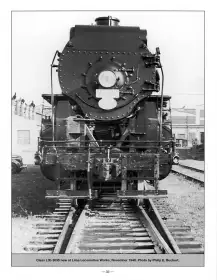
Tom describes and reviews the performance of the “late” Mohawks obtained by the New York Central, and acquaints readers of the Central Headlight with the characteristics and the performance of these fine locomotives, which were obtained by the New York Central starting in 1940. He also included a table of weights and dimensions of the L3’s and L4’s, which demonstrates the evolution of the Mohawk type on the Central from the late 1920’s to the final design, which was produced in 1943-44. It was significant that there were very few 4-8-2 type locomotives built after the NYC L4b class. By this time, many roads which required a locomotive with four driving axles had developed 4-8-4’s.


The second PT-1 tender, as new. First applied to class J3a #5453. Note no expansion chamber or overflow pipes. NYC RR photo, 5-26-43.
The roster charts showing the locomotives to which these PT tenders were assigned during their service lives were compiled from the NYC tender historical record cards, which, fortunately, exist these many years later and provide the information for this article.



Build new in 1906 by Barney & Smith Company, as a passenger and baggage combine, No. 107, NYC, Motor Car M-8 begins a new life after rebuilding at the West Albany, NY shops in 1928 as a motor car. This is just one of the many motor cars owned and operated by the NYCS.



 These three cars from Lots 390-H (79262) and 390-H (79464, 79536) were rebuilt at the Beech Grove shops in 1933 using the Union Metal Products Company’s pressed steel paneled sides with integral stakes. The 1936 renumbering program is still in the future, and the cars proudly carry Big Four reporting marks.
These three cars from Lots 390-H (79262) and 390-H (79464, 79536) were rebuilt at the Beech Grove shops in 1933 using the Union Metal Products Company’s pressed steel paneled sides with integral stakes. The 1936 renumbering program is still in the future, and the cars proudly carry Big Four reporting marks.During the period of federal control of the American railroads during and immediately following World War I, from January 1, 1918 to March 1, 1920, the United States Railroad
Administration acquired a total of 93,400 standardized freight cars. These were distributed to the various railroad properties as required to alleviate equipment shortages
brought about by the wartime traffic demands. This included about 3,000 hopper cars for the NYCS.


From 1917 to 1961 the New York Central and subsidiary roads acquired a total of 37,947 open-top hopper cars of 70-ton capacity. These cars were of five basic designs, and two designs accounted for over 80% of the total.

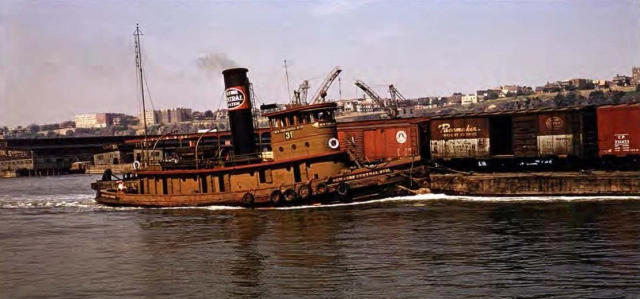
An important division within the New York Central system was the Marine Department at New York. In 1921, for example, it employed 1,500 men and boasted 308 pieces of “floating stock” (as opposed to rolling stock) to handle the enormous traffic to, from, and within the Metropolitan region. (All articles by Thomas Flagg)




We received a list of NYCS structures and facilities from William Husband who is working on an extensive database of materials about US railroads that will include extensive material on all railroads including the NYCS. He has provided this list of structures and facilities for us to provide to NYCSHS members and others. It cannot be republished without his permission.
If you know of additional structures or facilities contact use at NYCSHS@verizon.net to provide us with updates.

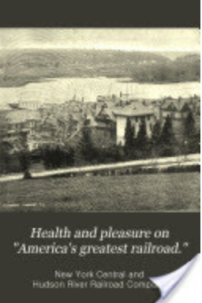
Health and Pleasure on “America’s Greatest Railroad”: Descriptive of Summer Resorts and Excursion Routes, Embracing More Than One Thousand Tours by the New York Central & Hudson River Railroad.
Available: New York Central System Historical Society Library Summer Resorts And Excursion Routes; New York Central & Hudson River R.R Season Of 1889.
There are a few blank pages in the beginning, but keep scrolling down and you will get to the start of the book.
An important document that lists virtually every place or point of interest on the New York Central & Hudson River line.
Topics include: Steamboat lines, Stagecoach lines, maps, Hotels, station lists, connections, Wagner Car Company Diagrams (Floor plans) for Private Cars, & Charter cars: Grassmere, Riva, Wanderer, Hudson River Day LineHudson River Day Line photos and schedules, Advertisements, Travel
Pages 1-249 describes points of interest, industries
Page 250 list of Stations, Connections, steamboat lines and stage coach lines.
Pages 251-256 list of steamboat and statecoach schedules
Pages 258-260 Tourist tickets, stopovers
Pages 261-332 Excursions, listing cities and various railroad options to reach these cities.
Pages 334-336 Ticket prices to the Pacific Coast, Mexico Colorado, Hot Springs, AR Round the world tickets,
Pages 337-339 Ticket prices New York-Poughkeepsie-Putnam Junction
Pages 340-376 List of Hotels and Boarding Houses
Pages 378-380 Comparative Mileage and times between important NYC&HR points and cities, various hotels and resorts
Pages 381-381 Foreign Cities: Distance and Times
Pages 382- Wagner Car Company Diagrams (Floor plans) for Private Cars, & Charter cars: Grassmere, Riva, Wanderer
Pages 385-503 Hotel Advertisements and photos of hotels
Pages 504 Hudson River Day Line photos and schedules
“Telegraph Calls of the New York Central Lines,” Gordon M. Meints, compilor (Kalamazoo, Mich: Michigan Classic Railroad Reprints, 1980). Meint’s work is a 36 page, two-column, single spaced softback. In the introduction, Meints mentions that his work is “arranged by operating divisions of the NYC and its leased lines as they existed around 1940.” But his only reference to his sources is the statement that the work was “compiled from New York Central publications and employee timetables.” His center-fold map is taken from the 1924 “NYC Director of Stations.” Bill Dunbar has marked several mistakes and a number of ommissions in the Meints work.
From the Morse telegraph Club
Would like to know what coach was the most used in the 60’s on the New England States. Budd cars of how many seats, thanks.
We will get back to you on this. Brady says:My grandfather worked on the New York Central Lines in Ashtabula Ohio and I’ve been trying to find out what types of locomotive switchers operated there. This would’ve been early and mid 60s.
We will do a little research and get back to you.Here are the answers we have from a couple of our knowledgeable members.
West of Buffalo, most of the fleet was EMD, and there was even a diesel shop built at Ashtabula in the 1950’s to maintain the fleet. (NYC dismantled the shop after only a few years. This mistake was one item that caused a NYC Officer to be removed.) During my visits, most or all of the switching at the Ashtabula dock was two unit sets of EMD GP7’s., 5600 and 5700 series. I don’t ever recall seeing a EMD SW switcher, but there may have been one or two. Most of the action and the heavy switching was at the dock. I never visited Carson yard during the time period that is in question. GP’s were common both as road power and in the yards. Carson Yard was used only for assembling southbound traffic as Carson Hill limited the tonnage of southbound ore drags, for occasional block swapping, and for setting out local traffic for the high-grade route. In the mid to late 1960’s, NYC leased some B&LE F-units as helpers. IIRC, they were low geared and had a higher tractive effort than NYC units. When I was at Ashtabula, they were assembled as a 4-unit helper and a 2-unit job that was also used for local work on the CEICO lead, much to the annoyance of the assigned crew.
Thanks for the info, I asked him about his experience there and it all seemed accurate. However I do have a few final questions and that is what paint schemes did those GP7s have? I know NYC had the all black and white logo scheme and then they had the “lightning bolt” paint scheme. I looked into the paint scheme section on this website and looked at google images and it seemed they could’ve been both. Also were the only F units of B&LE or other railroads?
GP-7s on the NYC had lightning stripes in both freight and passenger colors and them all black with the Cigar Band logo later. I have no idea about the B&LE but almost all railroads at that time at GP-7s if they had road locos.
Chris m says:I am attempting to find as many photographs of new york centrals H10a road number 3 locomotive. If anyone can help it would be greatly appreciated as i have in my posession its bell and am trying to match it to photos. Thank you.
You can search our photo website for photos you are looking for. Go to https://nycshs.org/detailed-instructions-for-the-nycshs-archive-photo-and-valmap-website/
and follow the instructions there.
I have a book by the Pennsylvania railroad that lists every line, stations, surfing and companies served in about 1945 for its station agents.
Did the New York Central ever publish such a book for the in station agents? I have never seen one. Thanks.
After seeing the article posted here from Railway and Locomotive Engineering about the NYC electric freight locomotives, I started looking through old issues of the Street Railway/Electric Railway Journal, Railway Age, Engineering News, and other trade magazines from 1900 to 1925 (all available online), and found close to 150 articles regarding NYC facilities (particularly in the electric zone, but elsewhere as well), locomotives (both steam and electric), and equipment (both passenger and freight). Many of these had photographs, and (in some cases) drawings included in the article. I can certainly provide copies of the files to the NYCSHS if you’re interested. In addition, since these are now all considered to be in the public domain due to age, they could easily be included in the technical/research information provided here without concerns over copyright.
Thanks. I will forward your offer to the proper person in the Society. Joshua Moldover says:Was this ever followed up? I never heard anything back from anyone at NYCSHS if there was any interest in these.
Richard Wallis says: Can you tell me when the X-plorer trainset was pulled from active service?The train made its last run on August 17, 1957, after less than 15 months of operations. As a result, the train’s name (Ohio-Xplorer or Xplorer) did not appear on the railroad’s October 27, 1957, timetable. The equipment was retired in 1960, and was sold to Jones Tours for excursion service. After a long period of storage in South Carolina, the train and locomotive were scrapped around 1970.
Paul Mateer says:Any chance you would have a source for roof pics of NYC DEp 1500 I’d like to scratchbuild one Thank you
You can search or photo database online at: https://nycshs.org/nycshs-digital-archive/
If you find what you are looking for you can order it direct there.
I am trying to obtain the wiring diagrams for Budd built 2900 series cars. I own one and need them for restoration purposes. Can you help?
Steve Bratina says:Did the Commodore Vanderbilt and the Rexall Train locomotives ever have their pictures taken together?
Steve,
If we have any you can find them in our online digital photo database at: https://nycshs.org/nycshs-digital-archive/ If you find what you are looking for you can order the photos directly there.
Back in 1907, as part of the construction that was being done to create Grand Central Terminal and electrify all of the New York terminal trackage, there was a plan (with what appear to be railroad-supplied engineering drawings) published in The Railway Age (March 22, 1907, v43,#12) to turn the at-grade junction at Mott Haven between the Hudson and Harlem divisions into a fully grade-separated flyover junction. Clearly this never actually happened. Is there any documentation as to why the plan was never implemented? That junction is still (maybe even more today, maybe not) a source of delays and operating interference, just as it was 114 years ago…
It’s an interesting question. From having spent quite a bit of time browsing the William Wilgus papers at the New York Public Library, I believe the grade separation at MO was Wilgus’ idea. I think the judgement of senior management was, the huge cost would outweigh the benefits. Wilgus — who was then the Vice President-Construction Department — saved a huge trove of inter-office memos in which these kinds of issues were discussed at length. Both NYC President William Newman and the Senior Vice President William Brown, often emphasized to Wilgus that the ongoing upgrading of freight facilities (in order to operate longer, heavier freight trains at higher speeds), plus the large investment to be made in building Grand Central Terminal and the suburban electrification, was requiring a lot of capital. That other proposed improvements had to be of absolute necessity or the Board of Directors and Executive Committee would object vociferously. This was another idea for which the consensus was, the cost outweighed the benefits. They agreed to put a test section in use but the idea was eventually turned down and the test section dismantled. In this case I think Wilgus finally (and reluctantly) agreed. If you’d like to read the article in Railway Age (March 22, 1907, v43,#12, I’m pasting a link below: It begins on p392. The link is to the HathiTrust Digital Library website. No login required.
A similar idea Wilgus proposed was to use overhead conductors at various junctions in the Electric Zone in order to prevent gapping by locomotive-drawn passenger trains. Wilgus was able to get a test section installed at MO, which was pictured in the March 22, 1907 Railway Age issue referred to. https://babel.hathitrust.org/cgi/pt?id=umn.31951d000431969&view=1up&seq=428&skin=2021&q1=%22Mott%20Haven%22
Josh’s comment about MO as a source of delays and operating interference is not correct insofar as it refers to the New York Central. With careful scheduling and good operating discipline, as was typical between 1907 and 1967. the junction worked very well. I say that from personal experience working on the railroad between 1959 and 1967 and being a commuter on the Harlem. Also my father was a Harlem commuter from 1937 until after 1967. During all of those years, on time arrivals were what was normally expected. There were few delays. Those that did occur were for the most part equipment failures. With a well designed track layout and using three tracks inbound in the morning rush and thee outbound in the evening, traffic flow through MO was not usually a problem. To give one example of the traffic, in the 1951 timetable there were 65 trains scheduled in and out of GCT between 8:00 am and 8:59 am. Delays at Mo were rare. Note that am talking about when it was the New York Central. Penn Central and Conrail are a different story. A fact that probably helped with on time performance was that nearly all of the officers of the railroad including all the vice presidents lived in Westchester and were daily commuters riding through MO both morning and evening.
Alan Roeckel says:I am trying to find out information about the pre World War 2 electric commuter cars refurbished by the Beechwood Grove shops in the 1960’s. Car numbers, before and after exterior and interior photos etc.
We will take a look and see if we have anything to help you. Please contact Rich Stoviing at rlstoving@nycshs.org he has agreed to try to help you.There are two photos in Vol 2 of the Morning Sun NYC Color guide that lend an answer to this question. Page 17 shows one in Albany, on it’s way back to the Electric Division in 1961, and another photo of what appears to be a freshly shopped MU on Page 34.
Please contact Rich Stoviing at rlstoving@nycshs.org he has agreed to try to help you. Rick Miner says:I’m told my grandfather was an engineer on the NYC in the late 1920’s I’m trying to find out any info on him, route, position, equipment etc. his name was John Paternostro. Thanks for any info or the direction to proceed. rick rickm9867@yahoo.com